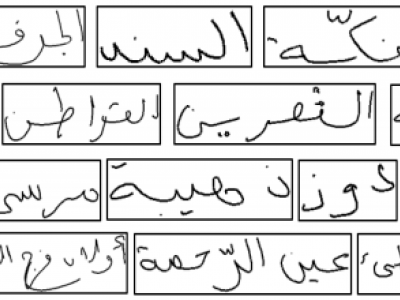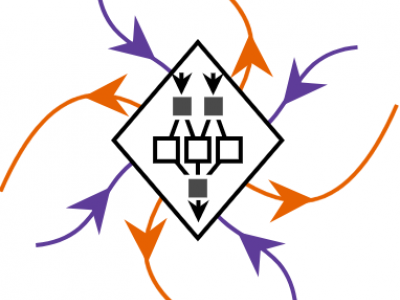Machine Learning
The ADAB database (The Arabic handwriting Data Base) was developed to advance the research and development of Arabic on-line handwritten systems. This database is developed in cooperation between the Institut fuer Nachrichtentechnik (IfN) and Research Groups in Intelligent Machines, University of Sfax, Tunisia. The text written is from 937 Tunisian town/village names. A pre-label assigned to each file consists of the postcode in a sequence of Numeric Character References, which stored in the UPX file format.
- Categories:
 2498 Views
2498 ViewsThe dataset consists all the Telugu characters that contains Vowels, Consonants and combine characters such as Othulu (Consonant-Consonant) and Guninthamulu (Consonant-Volwels). The main objective of this dataset to recognize handwritten Telugu characters, from that convert handwritten document into editable electronic copy.
- Categories:
 4536 Views
4536 Views
In modern computational science, the interplay existing between machine learning and optimization process marks the most vital developments. Optimization plays an important role in mechanical industries because it leads to reduce in material cost, time consumption and increase in production rate. The recent work focuses on performing the optimization task on Friction Stir Welding process for obtaining the maximum Ultimate Tensile Strength (UTS) of the friction stir welded joints. Two machine learning algorithms i.e.
- Categories:
 413 Views
413 Views
Training, Test, and Validation data pertaining to the real-time packet data captured in Sonic Firewall is attached herewith.
- Categories:
 217 Views
217 ViewsThe data collection was carried out over several months and across several cities including but not limited to Quetta, Islamabad and Karachi, Pakistan. Ultimately, the number of images collected as part of the Pakistani dataset were, albeit in a very small quantity. The images taken were also distributed across the classes unevenly, just like the German dataset. All the 359 images were then manually cropped to filter out the unwanted image background data. All the images were sorted into folders with names corresponding to the label of the images.
- Categories:
 2167 Views
2167 ViewsAdvent in machine learning is leaving a deep impact on various sectors including the material science domain. The present paper highlights the application of various supervised machine learning regression algorithms such as polynomial regression, decision tree regression algorithm, random forest algorithm, support vector regression algorithm and artificial neural network algorithm to determine the thin film thickness of Polystyrene on the glass substrates.
- Categories:
 253 Views
253 ViewsWe study the ability of neural networks to steer or control trajectories of dynamical systems on graphs, which we represent with neural ordinary differential equations (neural ODEs). To do so, we introduce a neural-ODE control (NODEC) framework and find that it can learn control signals that drive graph dynamical systems into desired target states. While we use loss functions that do not constrain the control energy, our results show that NODEC produces control signals that are highly correlated with optimal (or minimum energy) control signals.
- Categories:
 729 Views
729 ViewsOne paramount challenge in multi-ion-sensing arises from ion interference that degrades the accuracy of sensor calibration. Machine learning models are here proposed to optimize such multivariate calibration. However, the acquisition of big experimental data is time and resource consuming in practice, necessitating new paradigms and efficient models for these data-limited frameworks. Therefore, a novel approach is presented in this work, where a multi-ion-sensing emulator is designed to explain the response of an ion-sensing array in a mixed-ion environment.
- Categories:
 147 Views
147 Views
Networked detector systems can be deployed in urban environments to aid in the detection and localization of radiological and/or nuclear material. However, effectively responding to and interpreting a radiological alarm using spec- troscopic data alone may be hampered by a lack of situational awareness, particularly in complex environments.
- Categories:
 324 Views
324 ViewsBasil/Tulsi Plant is harvested in India because of some spiritual facts behind this plant,this plant is used for essential oil and pharmaceutical purpose. There are two types of Basil plants cultivated in India as Krushna Tulsi/Black Tulsi and Ram Tulsi/Green Tulsi.
Many of the investigator working on disease detection in Basil leaves where the following diseases occur
1) Gray Mold
2) Basal Root Rot, Damping Off
3) Fusarium Wilt and Crown Rot
- Categories:
 6413 Views
6413 Views




